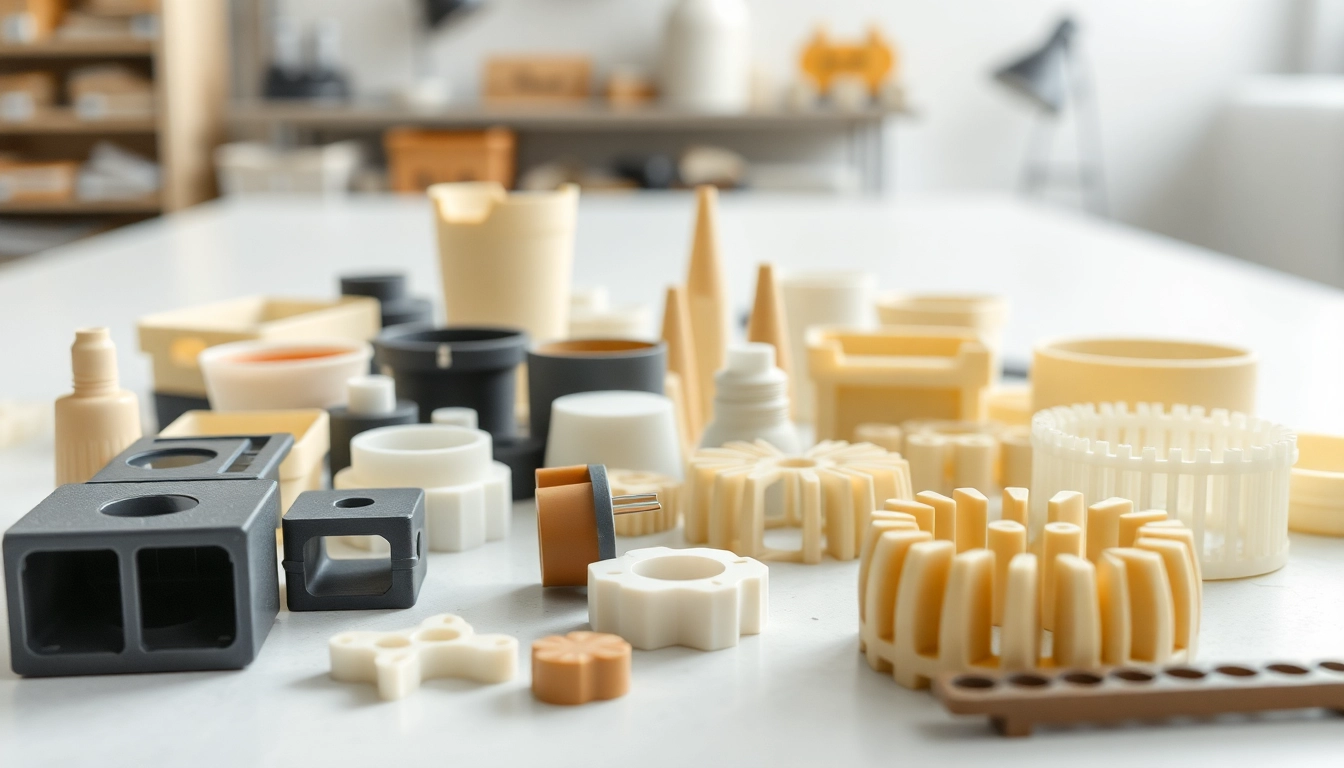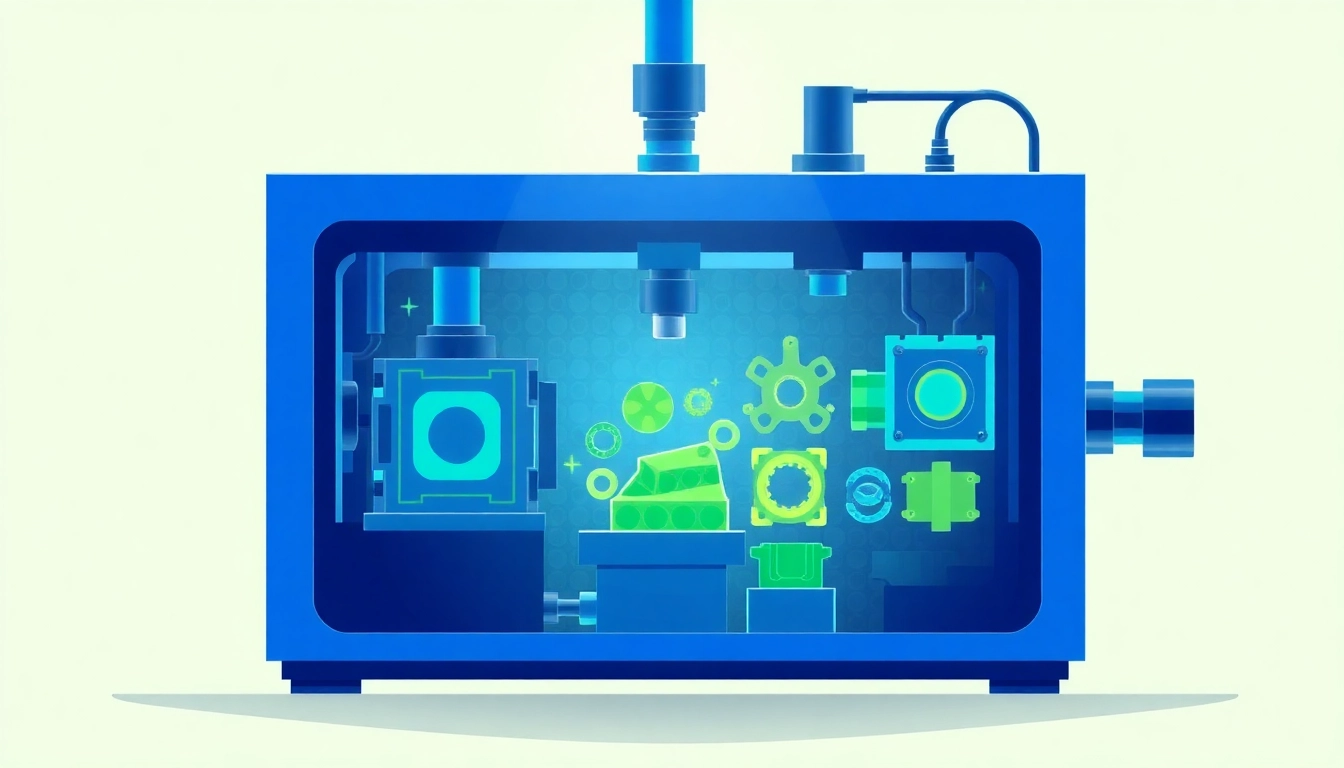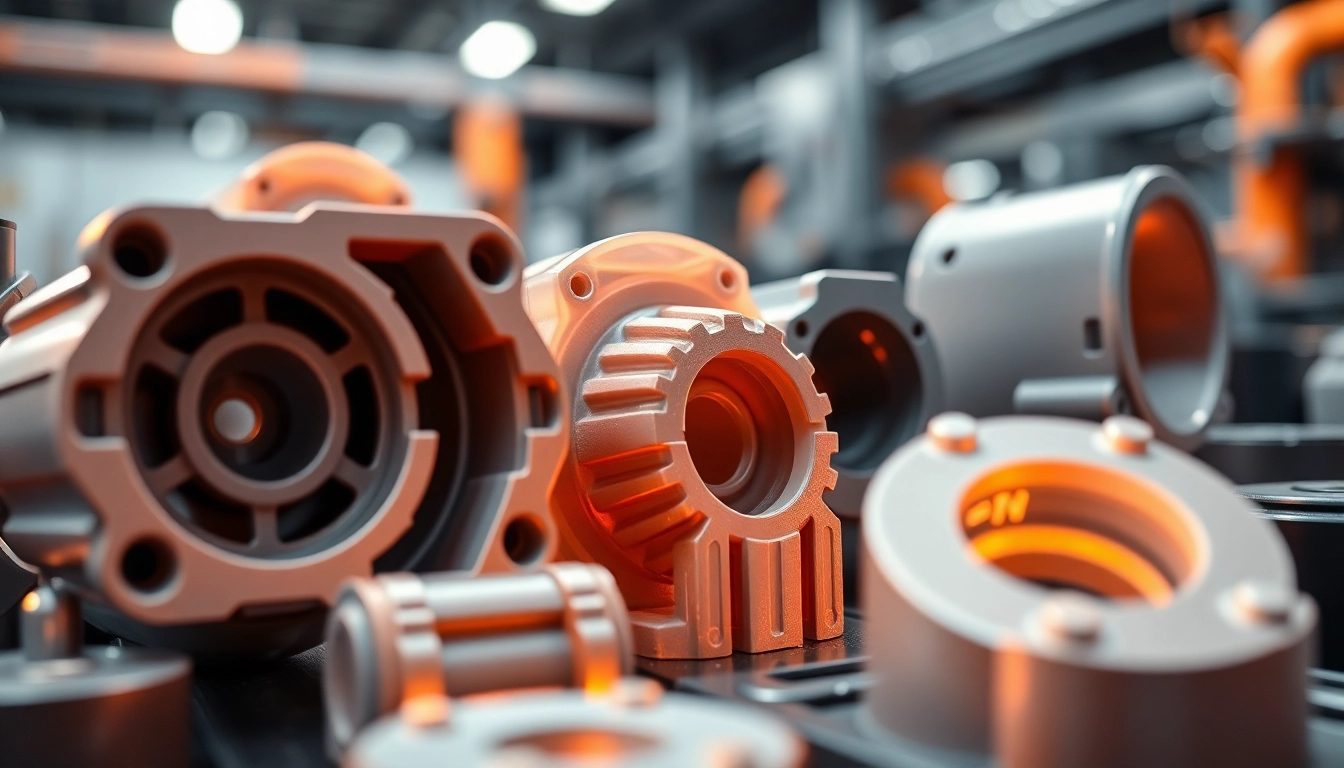Introduction to Injection Molded Parts
Injection molded parts are fundamental components in various industries, ranging from automotive to consumer electronics. This manufacturing process allows for the mass production of parts with high precision and consistency, making it a preferred option for producing plastic components. The process of injection molded parts involves injecting molten material into a mold, where it cools and solidifies into the final product. Through this article, we will delve into the intricacies of injection molding, exploring its history, significance, material considerations, the production process, design practices, and quality control methods.
What are Injection Molded Parts?
Injection molded parts are created by injecting melted material, usually plastic, into a mold cavity. Once the material cools and solidifies, it is ejected from the mold, resulting in finished parts. This manufacturing method is efficient for producing parts in large quantities and is widely used in various industries due to its versatility and cost-effectiveness. The types of parts produced can range from simple components to complex geometries with intricate details.
History and Evolution of Injection Molding
The origins of injection molding date back to 1872 when John Wesley Hyatt invented the first injection molding machine to mass-produce billiard balls. The process has undergone significant advancements since then, transitioning from mechanical to fully automated systems. With technological innovations such as computer-aided design (CAD) and advanced molding materials, the injection molding industry has evolved into a highly sophisticated manufacturing process. The development of specialized machines and molds has also played a crucial role in improving efficiency and reducing production costs.
Importance in Modern Manufacturing
Injection molding is vital in modern manufacturing as it allows for the production of high-quality, complex parts that are often impossible to achieve with other manufacturing methods. Its ability to produce lightweight and durable components makes it integral in industries such as automotive, aerospace, consumer products, and medical devices. Furthermore, the injection molding process is capable of achieving tight tolerances and dimensional accuracy, ensuring that parts fit together perfectly in the final assembly.
Materials Used for Injection Molded Parts
The choice of materials for injection molding significantly impacts the performance, durability, and cost of the final product. Understanding the characteristics and applications of different materials is essential for selecting the right one for specific applications.
Common Plastics in Injection Molding
Various plastics are used in injection molding, with some of the most common being:
- Polypropylene (PP): Known for its low density and high chemical resistance, polypropylene is commonly used in containers, automotive parts, and household goods.
- Polyethylene (PE): Widely used for its flexibility and durability, polyethylene is suitable for packaging, toys, and household items.
- Polyvinyl Chloride (PVC): Known for its rigidity and strength, PVC is often used in plumbing pipes, fittings, and various construction applications.
- Acrylic (PMMA): Offering excellent clarity and UV resistance, acrylic is ideal for applications requiring transparency, such as displays and lenses.
- ABS (Acrylonitrile Butadiene Styrene): With high impact resistance and toughness, ABS is commonly used in consumer electronics and automotive components.
Comparing Thermoplastics and Thermosets
Thermoplastics and thermosets are two primary categories of plastics used in injection molding. The main differences between them can be summarized as follows:
- Thermoplastics: These materials can be heated and reshaped multiple times without significant degradation. They are known for their flexibility, recyclability, and ease of processing. Common thermoplastics include PP, PE, and ABS.
- Thermosets: Once cured, thermosets cannot be remelted or reshaped. They are characterized by their ability to withstand high temperatures and maintain structural integrity. Common thermosetting polymers include epoxy and phenolic resins.
Material Selection Criteria
When selecting materials for injection molded parts, several factors should be considered, including:
- Mechanical Properties: Tensile strength, impact resistance, and hardness are crucial properties that determine how the part will perform under specific loads.
- Thermal Properties: The material’s melting temperature, heat deflection temperature, and thermal conductivity influence its suitability for various applications.
- Chemical Resistance: Understanding the environmental conditions the part will be exposed to helps in selecting materials that can withstand potential chemical exposure.
- COSt: The cost of raw materials can significantly impact the overall cost of production, making it essential to balance performance and budget considerations.
The Injection Molding Process
The injection molding process comprises several critical steps that together create the final product. Understanding each stage is essential for optimizing the process and ensuring product quality.
Step-by-Step Overview of Injection Molding
The injection molding process can be summarized in the following steps:
- Clamping: The mold is secured in the injection molding machine’s clamping unit, ensuring that the two halves of the mold are tightly closed to prevent leakage during injection.
- Injection: The plastic material is melted in the injection unit and then injected into the mold at high pressure. The melt flows into the mold cavity, taking the shape of the final part.
- Cooling: The injected material cools and solidifies in the mold. Cooling time is critical, as it significantly affects cycle times and the quality of the final part.
- Ejection: Once the part is cooled and solidified, the mold opens, and ejector pins push the finished part out of the mold.
- Inspection: The ejected part is inspected for quality control before being prepared for further processing or packaging.
Key Equipment Involved in Production
Several key components and equipment are involved in the injection molding process:
- Injection Molding Machine: The machine consists of an injection unit, a clamping unit, and a control system that regulates temperature, pressure, and timing.
- Mold: The mold is a precision-engineered tool that shapes the injected plastic, containing the cavity that forms the part.
- Material Feed System: The hopper and barrel system feeds raw plastic pellets into the injection unit, where they are melted and injected into the mold.
Common Challenges in the Molding Process
Despite its advantages, the injection molding process can face several challenges. These challenges include:
- Flash: This defect occurs when excess material seeps out of the mold, leading to unwanted projections on the part. Solutions include adjusting clamping pressure and optimizing mold design.
- Short Shots: This defect happens when the mold is not completely filled, resulting in incomplete parts. The cause could be insufficient material, poor injection speed, or mold design flaws.
- Warping: Distortion can occur as parts cool unevenly, leading to dimensional inaccuracies. To mitigate warping, designers should consider balanced cooling and uniform wall thickness.
Design Considerations for Injection Molded Parts
Effective design is crucial for successful injection molding. By adhering to certain best practices, manufacturers can streamline the production process while ensuring high-quality parts.
Best Practices for Part Design
Designing for injection molding requires a unique approach. Best practices include:
- Simplifying Geometry: Parts should be designed with simple shapes to minimize mold complexity and production costs.
- Incorporating Draft Angles: Adding draft angles on vertical surfaces facilitates part ejection and avoids damage during the ejection process.
- Designing for Assembly: Parts should be designed to minimize assembly time and reduce the need for additional fasteners or tools.
Draft Angles and Wall Thickness
Draft angles are essential in part design, typically ranging from 1 to 3 degrees, depending on the material and mold finish. Additionally, maintaining appropriate wall thickness is critical to achieving uniform cooling and preventing defects. Standard wall thickness is usually between 1.5mm and 3.0mm.
Utilizing CAD for Effective Design
Computer-Aided Design (CAD) software allows designers to create detailed and accurate 3D models of parts. CAD tools help in visualizing the final product, simulating injection molding processes, and testing different design iterations before physical production. This technology not only saves time but also enhances product quality by optimizing design parameters.
Quality Control and Testing of Injection Molded Parts
Quality control is a pivotal aspect of the injection molding process. Following stringent quality assurance protocols is essential to ensure that the final parts meet the required specifications.
Standards and Metrics for Quality Assurance
Several standards and metrics are used to ensure quality in injection molded parts:
- ISO 9001: An international standard that outlines criteria for a quality management system.
- ASTM Standards: These standards provide guidelines on material properties and testing methods to ensure consistency and performance.
- Dimensional Tolerance: Parts must adhere to specific dimensional tolerances to ensure they fit properly in the intended application.
Common Defects and Their Solutions
Despite quality control measures, defects may still occur. Common defects include:
- Bubbles: Caused by trapped air, bubbles can be minimized by adjusting injection speed and ensuring the mold fills completely.
- Discoloration: Color issues can arise from overheating materials. Maintaining appropriate processing temperatures can mitigate this issue.
- Surface Imperfections: These can result from mold wear or contamination. Regular maintenance and cleaning of molds are essential for defect prevention.
Future Trends in Quality Control Technologies
As technology advances, the injection molding industry is witnessing trends aimed at enhancing quality control. Innovations such as artificial intelligence (AI), machine learning, and advanced inspection techniques are being integrated into the quality assurance process. These technologies enable real-time monitoring and predictive maintenance, reducing downtime and improving the overall production process.



